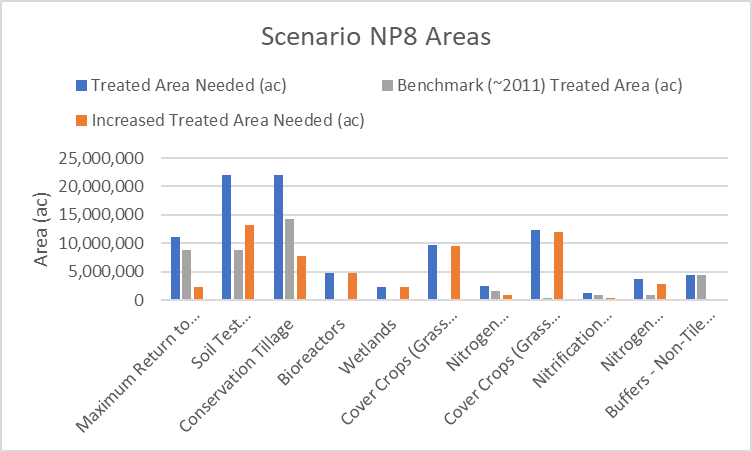To better align available data sources for tracking conservation practices and the Illinois Nutrient Loss Reduction Strategy framework, additional hypothetical scenarios to meet water quality goals were developed in 2020. A full description of these scenarios can be found in the final report, with a summarized version presented in the 2021 Nutrient Loss Reduction Strategy biennial report. These scenarios focused on agricultural conservation practices to reduce nitrogen and phosphorus in support of Hypoxia Task Force efforts to reduce loads to the Gulf of Mexico. As part of this effort, a spreadsheet was developed to run “what-if” type assessments of combinations of conservation practices. Additional efforts to track conservation practices are underway within other states as well as regionally.
Results from the scenario development in Illinois in 2020 show that the state-level National Agricultural Statistics Service (NASS) survey is a very important source of information about what farmers in Illinois are doing on the water quality front. Meeting interim nitrogen and phosphorus reduction goals may cost ~$280 million annually, and meeting final reduction goals may cost over $900 million annually. Levels of implementation to achieve final reduction goals can be seen in the following figure. Here, the “Benchmark” bar represents what was already being done “on-the-ground” in Illinois circa 2011. The “Increased Treated Area Needed” bar represents what would still be needed, in this hypothetical scenario, to reach water quality goals.
